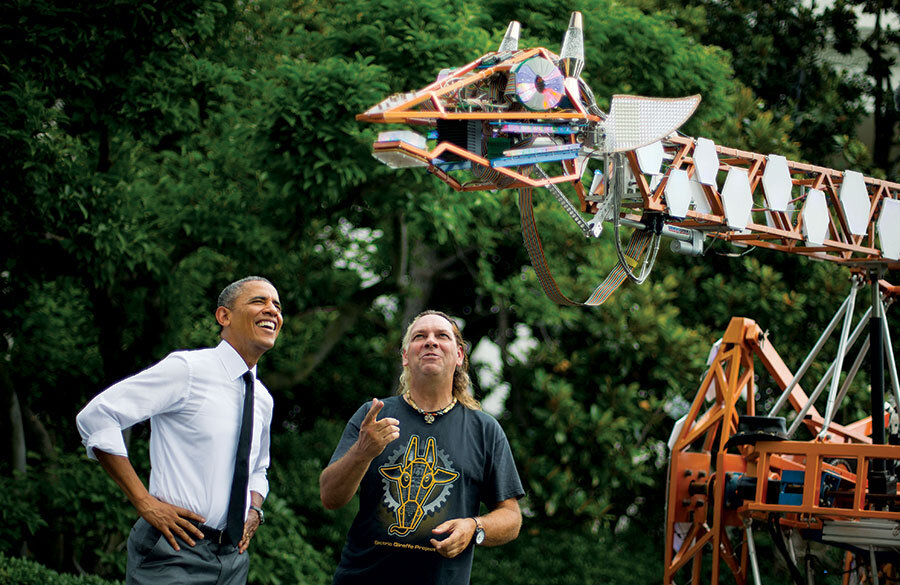Building for a better world
Loading...
Some trends are head-scratchers, some are disheartening, some disturbing. We all have examples, so I won’t single anything out (well, maybe one: the queasier applications of body piercing that you see now and then in the checkout line). But then along comes a trend so refreshing and constructive that it reminds you of the basic intelligence and companionablity of humanity. The “maker movement” is such a trend.
As you’ll see in a Monitor cover story (click here), makers are creative experimenters. They are hands-on. They learn together, work together, cross-pollinate, and invent. They have fun. They don’t just watch, they do. Sure, making things can be a form of entertainment. But building isn’t passive. It isn’t immersion in someone else’s computer code, fantasy world, or melodrama. It is learning how things work – and working to make things work better.
Hobbyists and do-it-yourselfers were makers long before the term was coined. The “appropriate technology” movement popularized by E.F. Schumacher in the 1960s shares maker DNA. So, for that matter, did the studios of artists like Leonardo da Vinci. What’s new now is what’s always new in the Internet Age: the combination of networking, open-source knowledge transfer, crowdfunding, and relatively cheap machines such as 3-D printers. Put those together with the eternal lure of tinkering and you have a movement that some see as a new industrial revolution. Wired magazine editor Chris Anderson thinks desktop manufacturing will do to atoms what desktop computing did to bits and bytes. It will disrupt assembly lines and mass production in favor of one-off and small-batch products.
Thomas Edison and his inventor pals were makers. So were Steve Jobs and Steve Wozniak during and after their time at the Homebrew Computer Club. Some of the wilder experimentation in the food world – the “molecular gastronomy” developed in the labs of chefs like Ferran Adrià, for instance – could be said to fall into the maker category.
Jam sessions, skunk works, and garages can be maker venues, though there is generally more scientific intention and communal spirit – and less competition and monetization – in what are variously known as makerspaces, hackerspaces, or fab labs. The Mt. Elliott Makerspace in Detroit, which Noelle Swan singles out in this issue, is one such place. There are hundreds more – from the WoeLab in Togo to ARC Hub in Phnom Penh, Cambodia (hackerspaces.org tracks 1,762 active or planned venues around the world).
What happens inside a makerspace can run the gamut from knitting and soldering to robotics and acoustics. The point is to learn, experiment, and make – in short, to do. The maker movement is about using head and hands not just to experience the world but to participate in it. That’s a trend worth applauding.
John Yemma is the Monitor's editor-at-large. He can be reached at yemma@csmonitor.com.






